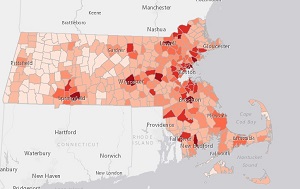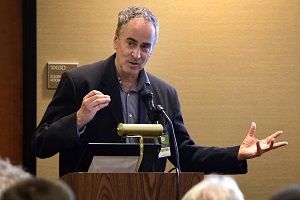Hot Off the Press
The Superfund Research Program (SRP) regularly highlights basic and applied research and activities from the program that span multiple disciplines.
Research Briefs
Three-Dimensional Cell Model Enhances DNA Damage Testing
NIEHS-funded SRP scientists developed a new platform, known as the SpheroidChip analysis method, to rapidly test for DNA damage in three-dimensional (3D) cell models. Development was led by Bevin Engelward, Sc.D., at the Massachusetts Institute of Technology.
Arsenic Complicates Groundwater Bioremediation
A common groundwater contaminant, trichloroethene (TCE), can be reduced by certain bacteria, a process known as bioremediation. But this process may stall when arsenic is present, according to a new University of California, Berkeley SRP Center study. TCE, a widely used industrial solvent, pollutes groundwater from improper handling practices.
Electrochemical System Degrades PCE in Groundwater
An electrochemical system can effectively break down tetrachloroethylene (PCE) in groundwater, according to a new study from the NIEHS-funded Northeastern University SRP Center. After testing different design parameters to determine the best conditions for degrading PCE, the researchers achieved 86% removal of the contaminant from groundwater sources.
Environmental Factor Articles

Fighting COVID-19 Using Data Science
NIEHS SRP grant recipients are lending their expertise in data integration and online tool development to explore how COVID-19 spreads and why some communities experience higher risk of infection.
Enzyme May Play Key Role in Obesity-Related Leaky Gut
A new NIEHS-funded study suggests that intestinal problems connected to obesity are associated with an enzyme known as soluble epoxide hydrolase (sEH). UC Davis Center Director Bruce Hammock, Ph.D., led a team of researchers who inhibited sEH in obese mice. They observed that the absence of sEH improved intestinal function, curbed the movement of bacteria from the gut, and reduced inflammation.
Paper of the Month: NRF2 Activation Leads to Enlarged Liver
A study funded in part by the UC San Diego SRP Center suggested that prolonged activation of a protein nuclear factor called erythroid 2-related factor 2 (NRF2) may contribute to liver enlargement and fatty liver diseases. Normally, NRF2 plays an important role in regulating antioxidant defenses. In this study, researchers found that NRF2 also activated a protein called AKT and led to persistent production of growth factors associated with liver enlargement.
Bangladeshi Officials Learn How NIEHS Research Helps Their Country
Bill Suk, Ph.D., director of the SRP, spoke to a group of officials from the Bangladesh Ministry of Public Administration about arsenic exposure and the Health Effects of Arsenic Longitudinal Study. SRP-funded scientists from Columbia University and the University of Chicago, working with researchers from the University of Dhaka in Bangladesh, are following a cohort of more than 35,000 Bangladeshis. The team has tracked how the chemical affects residents over time, educated families on reducing exposure, and provided health clinics.
Environmental Risks Visualized Through New Online Tools
Researchers from the UC Berkeley and Texas A&M University SRP Centers developed online tools to inform the local community about potential environmental health risks.

Plants Take Up Heavy Metals, May Reduce Pollution
As part of the NIEHS Keystone Lecture Seminar Series, Julian Schroeder, Ph.D., researcher at the UC San Diego SRP Center, spoke about his research on how plants respond to environmental stress from toxic metals.
Risk e-Learning Webinar Series
SRP hosted a Risk e-Learning webinar series focused on exposures and latent disease risk. The series featured innovative work by SRP grant recipients and colleagues who are studying how we can better understand the health effects of exposures when there is a long latency period between the exposure and the onset of the disease. The series attracted more than 1,700 live participants over four sessions.
The first session provided an introduction to exposures and latent disease risk, including information about windows of susceptibility and later-life health outcomes, and set the stage for the rest of the series.
In the second session, presenters discussed new methods to better understand potential disease risk by identifying key characteristics or hallmarks of chemicals and disease. Their discussions provided insight into identifying chemicals that may lead to disease earlier on in the disease progression and explored how aging itself can be a risk factor for disease.
The third session described research linking early-life arsenic exposure and later-life disease risk. The focus on arsenic as a case study also provided insights into linking other exposures to latent disease risk and identifying windows of susceptibility.
In the fourth and final session, presenters discussed emerging toxicology and modeling methods, as well as needs, to better link exposure to latent disease risk.
to Top



